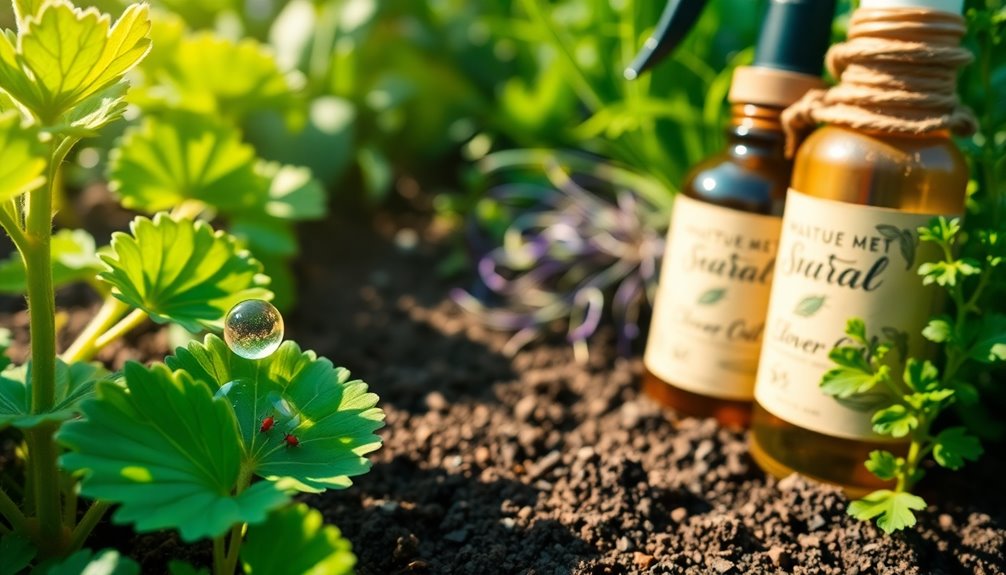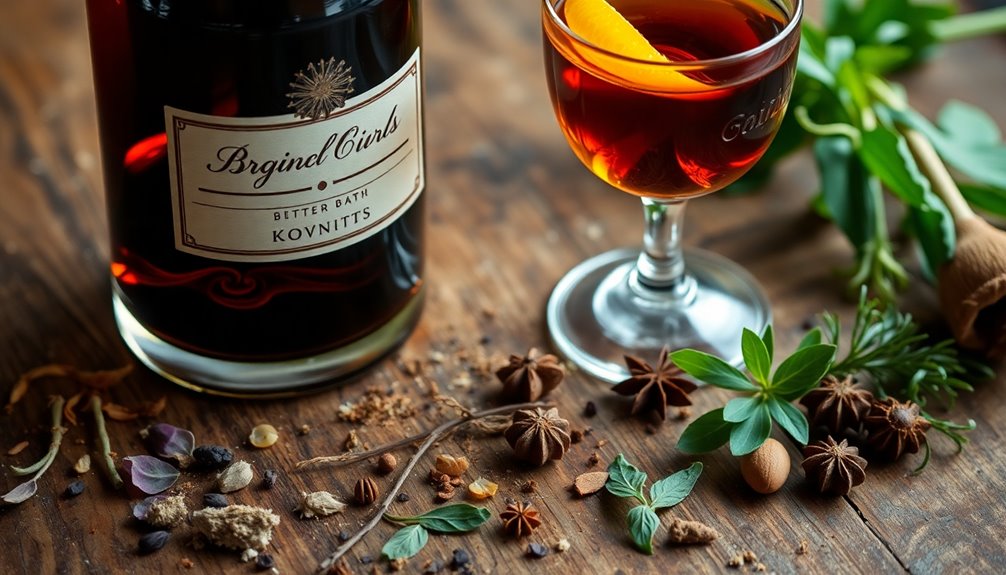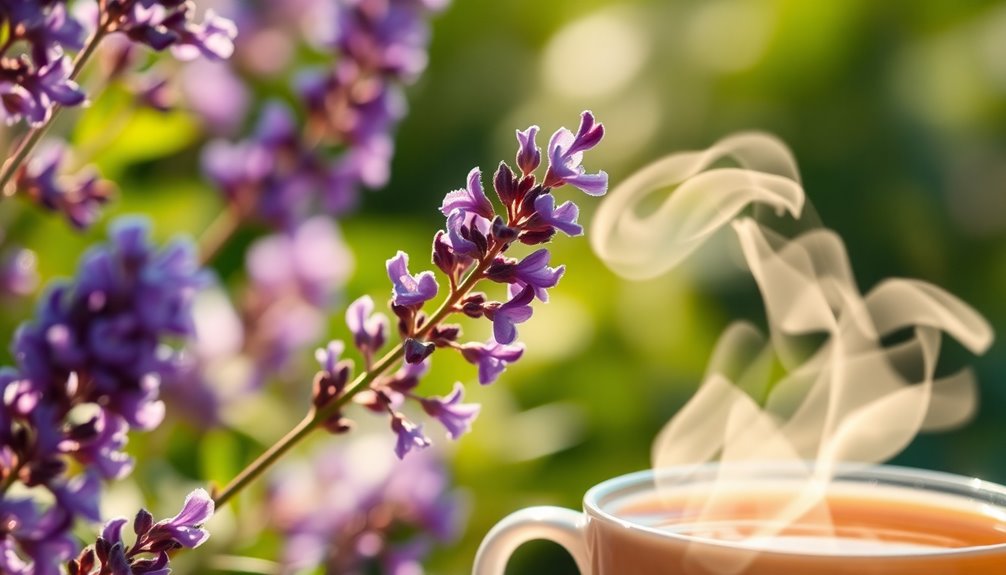Yes, onions are definitely aromatic! They play a vital role in elevating the flavor and aroma of many dishes. Whether you're sautéing them, adding them raw to salads, or caramelizing them for a rich consistency, onions enhance the taste and texture of your meals. They're packed with vitamins and antioxidants, offering health benefits too. Onions are essential in classic cooking combinations like mirepoix, which lay the foundation for countless recipes. If you want to discover more about onions' culinary uses and health benefits, you might find some interesting insights ahead.
Key Takeaways
- Yes, onions are classified as aromatics, enhancing flavor and aroma in various dishes.
- They belong to the onion family, which includes garlic, leeks, and shallots.
- Onions serve as a foundational element in flavor enhancement techniques like mirepoix.
- They release essential oils during cooking, contributing to health benefits and improved immune function.
- Onions are versatile and can be used raw, sautéed, caramelized, or pickled in diverse cuisines.
Definition of Aromatics
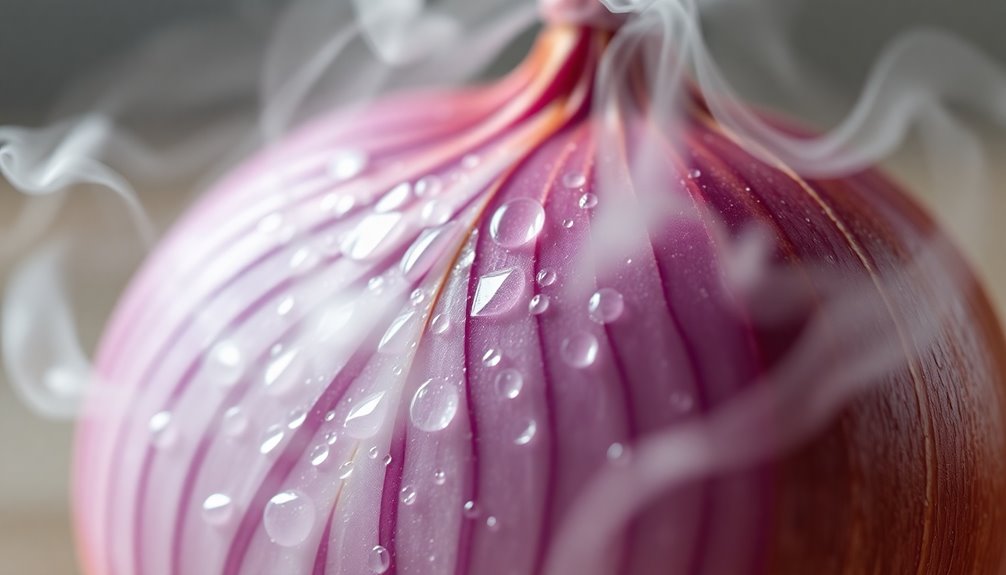
Aromatics are fundamental ingredients that elevate the flavor and aroma of your dishes, forming a foundational element in cooking. These aromatic ingredients include members of the onion family, such as garlic, leeks, and shallots. Additionally, essential oils derived from these aromatics can enhance both flavor and health benefits in your meals. Incorporating aromatics like onions can also provide health benefits such as boosting your immune system. Regular use of these ingredients may even promote improved skin health over time.
When you use these common aromatics, they contribute essential oils that infuse your dishes with depth and complexity. They're often employed as a flavor base for soups, stocks, sauces, and braises, making them vital for creating layered flavors. In addition, the use of these ingredients can enhance the effectiveness of air purifiers by improving indoor air quality as you cook.
While herbs and spices enhance flavors differently, aromatics focus on building the fundamental taste profile of your meals. By incorporating these ingredients, you guarantee that your dishes not only taste great but also offer a rich aromatic experience that keeps everyone coming back for more. Additionally, the use of aromatics can complement the nutritional composition of butter, enhancing the overall flavor while contributing to a balanced diet.
Role of Onion in Cooking
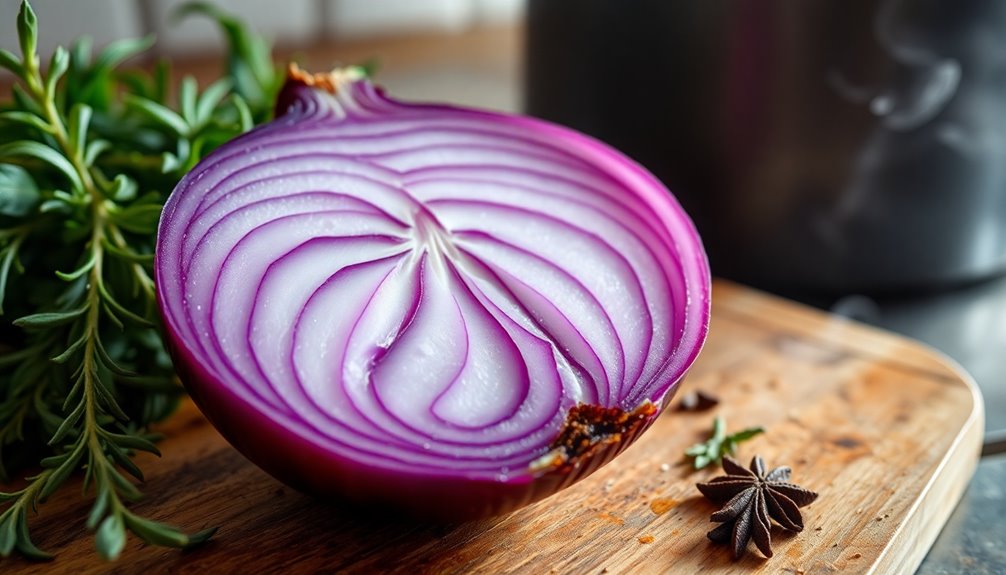
Onions play a key role in enhancing the flavor of your dishes, whether you're sautéing them for a rich base or adding them raw for a crisp bite.
Their versatility allows you to use them in countless recipes, from soups to salads, making them an essential ingredient in your kitchen.
Flavor Enhancement Techniques
Flavor enhancement in cooking often starts with the foundational ingredient that transforms simple dishes into culinary delights: the onion. As a key aromatic, onions lend depth to soups, sauces, and stews, making them essential for any flavor enhancement.
When you sauté onions, they release natural sugars, boosting sweetness and enriching the overall flavor profile. Their versatility shines through various techniques like caramelizing, roasting, and infusing, each adding unique characteristics.
Onions, part of the allium family, often serve as the base in classic combinations like mirepoix, alongside other vegetables and herbs. Their high water content creates a flavorful base, making them indispensable for layering flavors in complex recipes.
Embrace the onion to elevate your cooking!
Culinary Versatility of Onions
While many ingredients can enhance a dish, few can match the culinary versatility of onions. These aromatic vegetables form the backbone of countless cuisines, providing a foundational flavor and aroma in soups, stews, and sauces.
When sautéed, onions release natural sugars that deepen the dish's sweetness, making them essential for techniques like mirepoix and soffritto. You can enjoy onions raw, sautéed, caramelized, or roasted, each method showcasing a distinct flavor profile and culinary application.
Beyond taste, onions are rich in vitamins and antioxidants, offering health benefits like improved heart health and digestion. Their ability to complement meats, vegetables, and grains makes onions a staple ingredient in recipes worldwide, enhancing both nutritional value and taste.
Nutritional Benefits of Onions
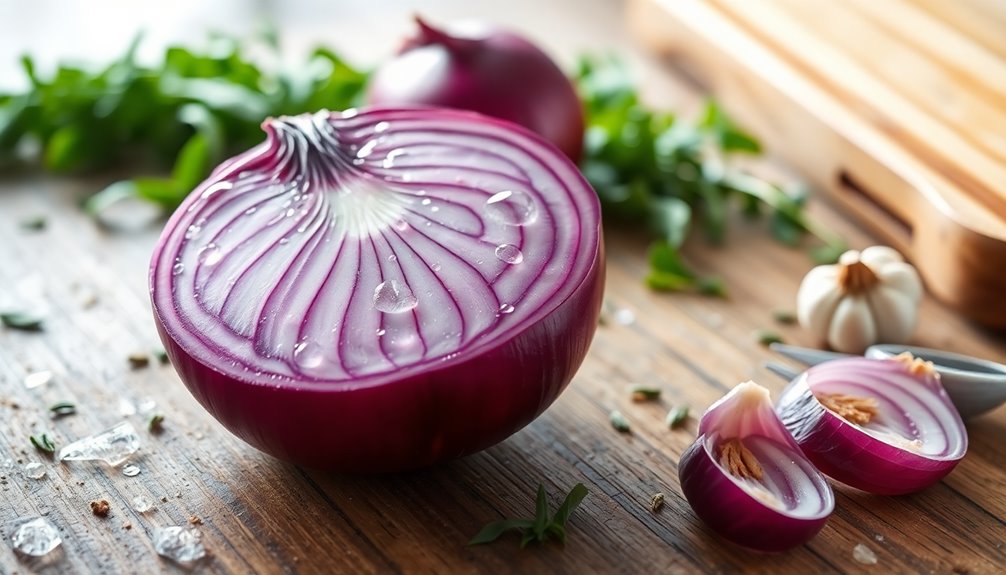
When you incorporate onions into your meals, you're not just enhancing flavor; you're also reaping a host of nutritional benefits.
These versatile vegetables are packed with vitamins C, B6, and folate, essential for immune function and energy metabolism. Onions are a great source of inulin, a fiber that promotes digestive health and nurtures beneficial gut bacteria.
With only about 40 calories per 100 grams, they add flavor without piling on calories. Plus, their powerful antioxidants, like quercetin, may help reduce inflammation and lower the risk of chronic diseases. Additionally, antioxidants combat oxidative stress, which can further enhance overall health.
Regularly enjoying onions can also support heart health by improving blood circulation and reducing cholesterol levels.
Comparing Aromatic Ingredients
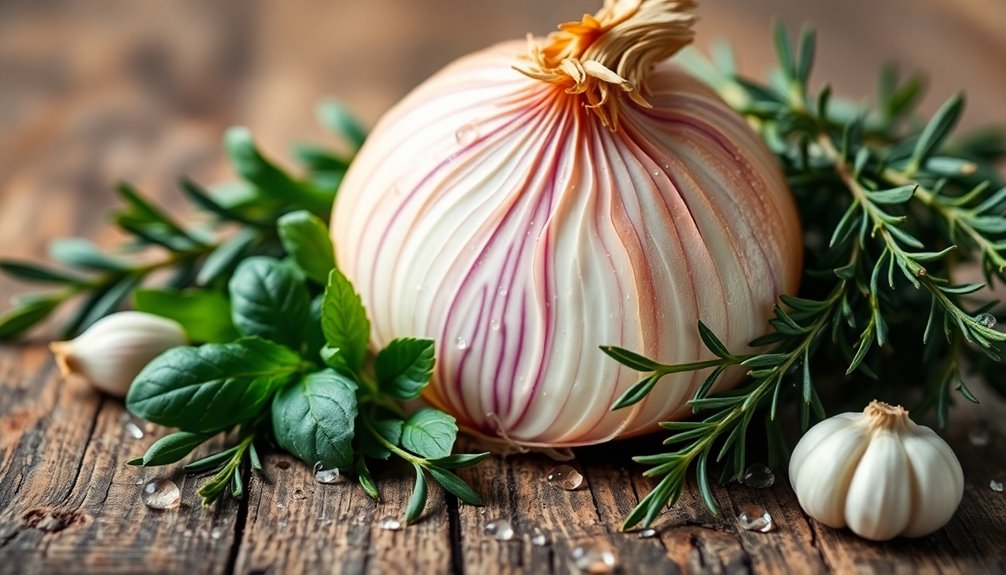
When you think about aromatics, onions definitely stand out for their unique flavor and aroma.
They're not just tasty on their own; they play a vital role in many culinary traditions by enhancing other ingredients.
Let's compare onions to other aromatic ingredients and see how they stack up in the kitchen.
Aromatics: Definition and Examples
Aromatics play an essential role in culinary arts, as they enhance the flavors and aromas of dishes. Onions, as a foundational ingredient, belong to the allium family and contribute both sweetness and astringency. They are also low in calories and high in water content, similar to raw summer squash, making them a great choice for weight-conscious cooking. High vibrational energy in cooking can also enhance the overall experience and enjoyment of food. Additionally, the historical use of butter making alongside aromatics like onions has shaped many traditional recipes. The versatility of onions allows them to be used in various culinary applications, similar to how wood-burning stoves provide efficient heating solutions for different spaces.
They're often paired with other ingredients to create classic flavor bases like mirepoix and soffritto, making them indispensable in many savory dishes.
Here are some key examples of aromatics:
- Onions
- Garlic
- Carrots
- Celery
- Leeks
Sautéing onions in fat releases their essential oils, intensifying their flavor and forming a robust base for countless recipes. Regular use of aromatics like onions can significantly enhance the overall taste profile of a dish, similar to how regular vacuuming helps maintain the longevity of carpets.
When you skip onions, you'll often notice a lack of depth, underscoring their critical role in building flavor within culinary practices.
Culinary Uses of Onions
While many aromatic ingredients enhance dishes, onions stand out for their versatility and depth of flavor. You'll find onions as a fundamental part of countless recipes, from soups to sauces and braises.
In classic French cooking, they play a vital role in mirepoix, combining with carrots and celery to form a flavor foundation. When cooked, onions develop a savory flavor, especially through caramelization, which amplifies their natural sweetness.
You can use onions in various forms—raw for crunch, cooked for warmth, caramelized for richness, or pickled for a tangy kick. This adaptability makes onions an essential aromatic ingredient in diverse cuisines, elevating the aroma and taste of your favorite dishes. Additionally, the use of savory ingredients like garlic in conjunction with onions can further enhance the overall flavor profile of a dish.
Popular Dishes Featuring Onions
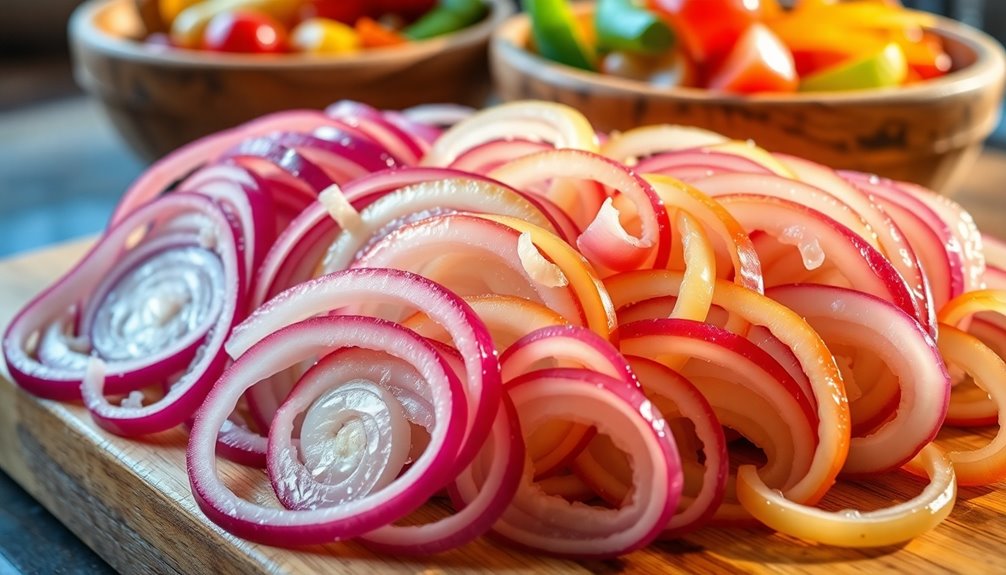
Onions play an essential role in countless popular dishes around the world, enhancing flavors and adding depth to meals.
Here are some iconic dishes that showcase the versatility of onions:
- French onion soup – Caramelized onions create a rich, sweet base.
- Soffritto – A staple in Italian cooking, providing depth for sauces and risottos.
- Sofrito – Spanish dishes like paella and stews rely on onions for flavor.
- Holy trinity – In Cajun cooking, onions, celery, and bell pepper form the base for gumbo and jambalaya.
- Stir-fries and curries – Asian cuisines use onions to add both flavor and texture.
Each of these dishes highlights the aromatic qualities of onions, making them indispensable in the culinary world.
Techniques for Cooking With Onions
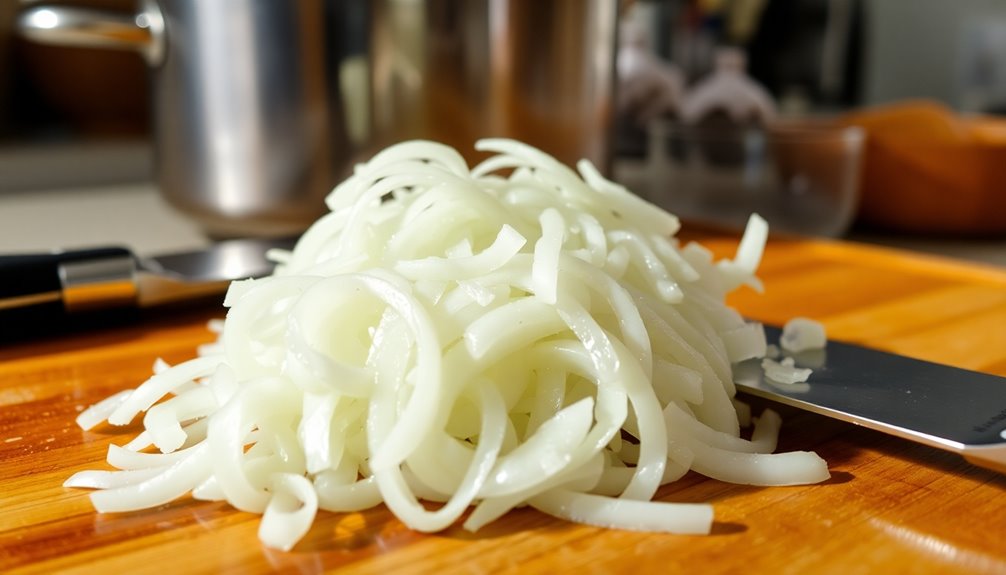
When cooking with onions, mastering sautéing is key to releasing their natural flavors.
You can enhance your dishes further by exploring caramelization techniques, which transform onions into sweet, golden gems.
Let's uncover how to perfectly sauté and caramelize onions for maximum flavor impact.
Sautéing for Flavor Release
Sautéing onions is one of the simplest and most effective techniques to release their rich flavors. When you sauté, you're enhancing the natural sweetness and depth of the onions through the Maillard reaction.
Here are some tips to get the best results:
- Use medium heat and a bit of oil or butter.
- Chop onions uniformly for even cooking.
- Add a pinch of salt to draw out moisture.
- Sauté for 5-10 minutes to unveil their aromatics.
- Adjust cooking time for desired sweetness.
This method not only transforms the flavor of onions but also creates a flavorful base for soups and sauces.
Embrace sautéing to elevate your dishes with the incredible taste of perfectly cooked onions.
Caramelization Techniques Explained
Building on the flavor-enhancing techniques of sautéing, caramelization takes the sweetness of onions to new heights.
To achieve perfect caramelization, cook your onions slowly over low to medium heat for about 30 to 45 minutes. Stir occasionally to prevent burning and guarantee even browning. Using a wide, heavy-bottomed pan promotes better heat distribution and moisture evaporation.
A pinch of salt draws out moisture, while a sprinkle of sugar can deepen the flavor.
Once your onions are beautifully caramelized, deglaze the pan with a splash of broth, wine, or vinegar. This lifts the flavorful browned bits, enriching your sauces and dishes.
Enjoy the rich, sweet depth that caramelized onions bring to your culinary creations!
Aromatic Combinations With Onion

Onions are essential in countless aromatic combinations that elevate the flavors of various cuisines. They serve as a foundation for many iconic dishes, enhancing the overall taste profile.
Here are some notable aromatic combinations featuring onions:
- French mirepoix: Equal parts of onions, carrots, and celery.
- Italian soffritto: Onions with carrots and celery for rich sauces.
- Cajun holy trinity: Onions, green bell peppers, and celery in gumbo.
- Spanish sofrito: Onions combined with garlic, tomatoes, and peppers.
- Asian trio: Onions, garlic, and ginger for stir-fries and curries.
These combinations showcase how onions interact with other aromatics, making them indispensable in cooking across cultures. Additionally, onions are often paired with quinoa preparation to create flavorful, nutrient-rich meals.
Whether you're preparing French cuisine or a spicy stir-fry, onions are your go-to ingredient for depth and flavor.
Global Uses of Onions

Across the globe, onions play an essential role in countless culinary traditions, enriching dishes in diverse ways.
As a fundamental aromatic ingredient, onions form the base for flavor in French mirepoix, Italian soffritto, and Spanish sofrito. They add sweetness and depth to soups, stews, sauces, and braises, elevating the overall taste.
In Asian cuisines, you'll often find onions paired with garlic and ginger, creating aromatic bases for stir-fries and curries. Their versatility shines through as you can enjoy onions raw in salads, caramelized for sweetness, or sautéed to build flavor.
With significant global production, especially in China, India, and the United States, onions truly highlight their importance in culinary traditions worldwide.
Storage and Freshness Tips
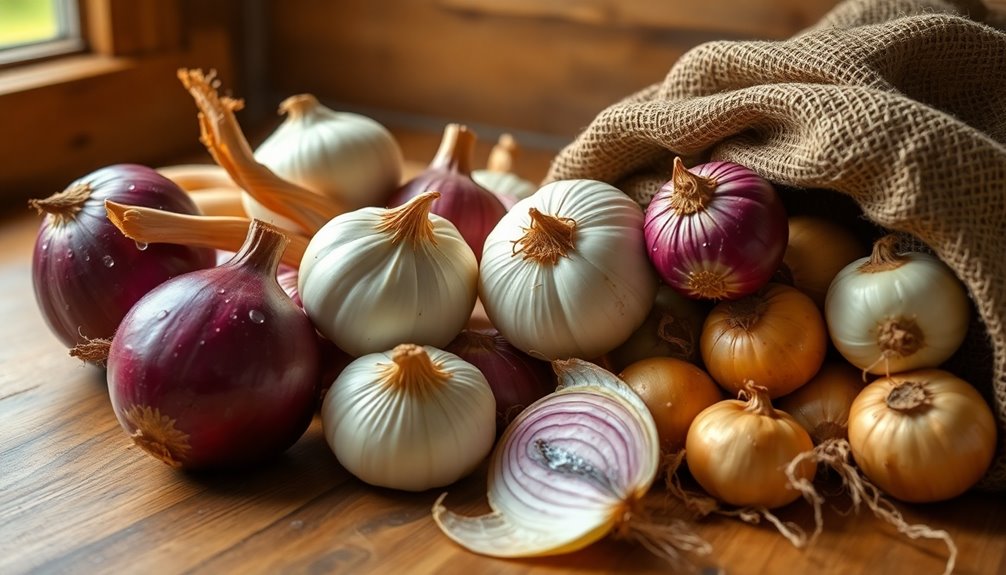
To keep your onions fresh and flavorful, follow a few simple storage tips. Proper storage is key to extending their shelf life and maintaining their taste. Here's how to do it:
- Store whole onions in a cool, dry, well-ventilated area (ideally 45°F to 55°F).
- Keep them away from direct sunlight and moisture to prevent sprouting.
- Once cut, place onions in an airtight container in the refrigerator and use within 7 to 10 days for ideal freshness.
- For green onions, store them upright in a glass of water or wrapped in a damp paper towel.
- Avoid storing onions near potatoes to prevent premature spoilage.
Enhancing Flavor With Onions
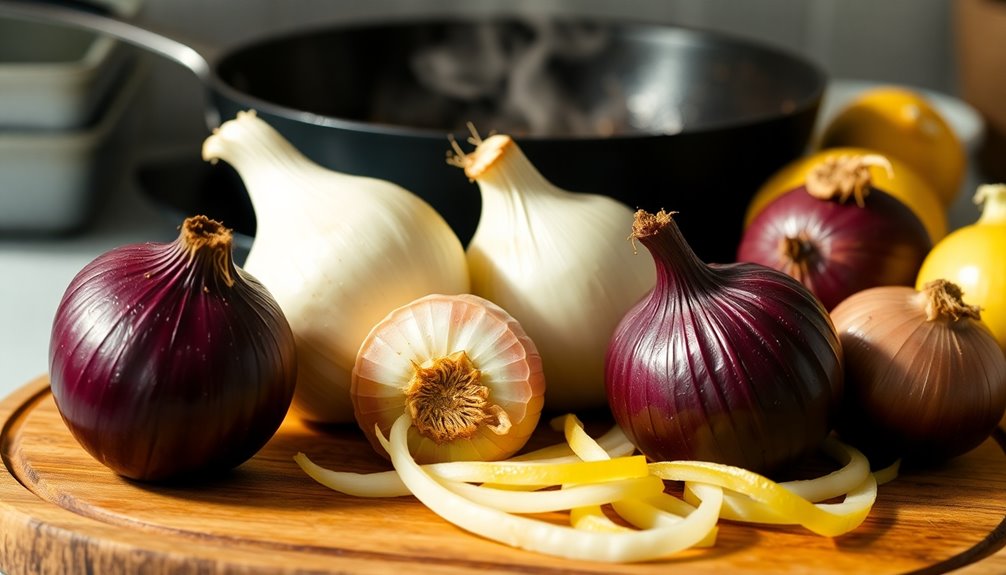
When you incorporate onions into your cooking, you're not just adding a vegetable; you're enhancing the entire flavor profile of your dish. Onions are foundational aromatics that form the base for many cuisines, especially in soups, stocks, and sauces.
When you sauté them, they release natural sugars, adding sweetness and depth. Their unique astringent quality balances rich and fatty ingredients, bringing complexity to your meals.
In classic French mirepoix, onions combine with carrots and celery, emphasizing their essential role in flavor-building techniques.
You can use onions at various cooking stages, from initial sautéing to garnishing, showcasing their versatility. Embracing onions in your dishes truly elevates the overall flavor experience.
Frequently Asked Questions
Is Garlic an Aromatic?
Yes, garlic is definitely an aromatic. Its strong flavor and aroma elevate many dishes, especially savory ones.
When you chop or crush garlic, it releases sulfur compounds like allicin, giving it that distinct pungent kick. You can sauté it with other ingredients to create a flavorful base for soups, sauces, or stir-fries.
Plus, whether you use it fresh, roasted, or as garlic powder, it adds a unique touch to your meals.
What Is an Aromatic Vegetable?
An aromatic vegetable is one that enhances the flavor and aroma in your cooking.
You'll often find them as foundational elements in various dishes. Common examples include onions, garlic, carrots, and celery.
These vegetables are typically sautéed in fat to release their essential flavors, making them vital in many recipes.
Not only do they elevate your meals, but they also provide health benefits, offering vitamins and minerals that support your well-being.
What Are Examples of Aromatics in Food?
Imagine stepping into a bustling kitchen, where the rich scents of garlic, ginger, and fennel mingle in the air.
These are just a few examples of aromatics in food. You'll find garlic enhancing savory dishes, ginger adding warmth to Asian recipes, and fennel providing a hint of sweetness in Italian cuisine.
When you incorporate these ingredients, you're building layers of flavor that make your meals unforgettable.
Aromatics truly elevate your culinary creations!
Are Ginger and Garlic Aromatics?
Yes, ginger and garlic are definitely considered aromatics.
When you cook with them, you'll notice how they enhance the flavor and aroma of your dishes. Ginger adds a warm, spicy kick, while garlic brings a distinct pungency that elevates your meals.
Using fresh varieties guarantees you get the most vibrant flavors, but even dried forms can still impart aromatic benefits.
Together, they help create delicious layers in stir-fries, curries, and soups.
Conclusion
To sum up, onions are like the seasoning that brings a dish to life, infusing flavor and aroma into your cooking. Whether you're sautéing them for a base, adding them raw for a crunch, or incorporating them into a stew, their versatility is unmatched. By understanding their aromatic qualities and nutritional benefits, you can elevate your culinary creations. So, next time you cook, remember the humble onion and let it work its magic in your kitchen!


